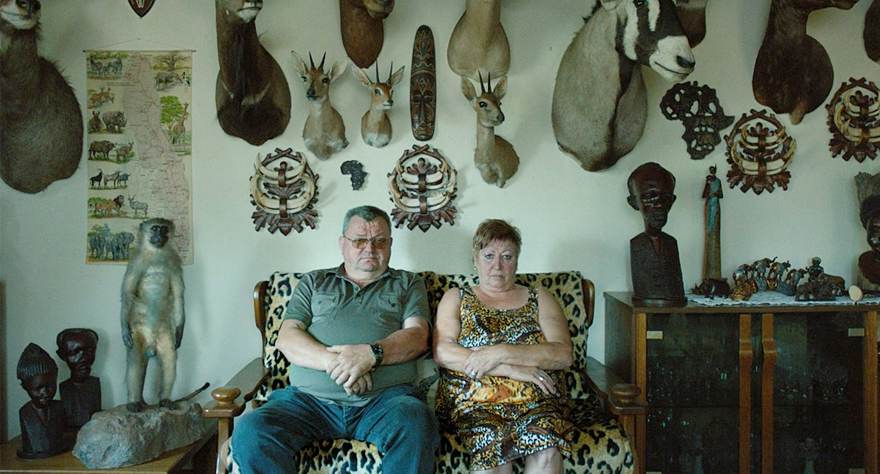
A documentary focused on the oddities in people's basements isn't as shocking as it wishes.

A documentary focused on the oddities in people's basements isn't as shocking as it wishes.
There’s something about basements that is inherently ominous, mysterious, and—in a way—dangerous. Generally a section of a person’s home that is off-limits to those who do not live there, basements are used to house almost anything, especially anything considered taboo. Director Ulrich Seidl’s documentary In the Basement ventures into these private quarters to discover that sometimes our imagination is stranger than reality.
A pre-credits still-shot finds a man meticulously watching his pet python stalk its prey inside of a large tank. Seidl holds the shot for an uncomfortable amount of time, given that it is completely obvious what’s about to happen. As soon as the reptilian beast strikes, the title card appears, preparing viewers for a creepy journey into the underbelly of the average person’s home. Maintaining the structure of still shots of middle-aged to elderly folks sitting in their basements—sometimes in complete silence, sometimes blabbering about their interests—Seidl stays constant, which sadly ends up being the biggest downfall of the film. The unflinching stillness of the onscreen imagery becomes increasingly dull as In the Basement progresses, especially during the scenes that are bereft of dialogue. Entire sequences pass without anything particularly entertaining, informative, or otherwise worth watching occurring, and the results are downright boring. Seidl always seems on the verge of redeeming himself by showcasing another quirky character with a peculiar basement, but the moments between lack the craziness the film’s opening sequence promised.
Unfortunately, what Seidl seems to discover through his journey is that the things most people keep in their basements are mundane, uninteresting, and not especially effective subjects for a documentary. Perhaps there are people in the world who find things like shooting ranges, workout equipment, and mounted animals to be completely shocking, but these subjects are too vanilla to hold the attention of the average filmgoer. Thankfully, there are a few outliers in the film whose basements truly are unsettling. Most notably is an elderly woman who keeps realistic dolls in boxes and coddles them as if they were her own, live children. Her behavior is sincere which makes the entire sequence truly unnerving. It’s like something out of a horror film but makes a long monologue about a man’s hunting trophies seem all the more dull in comparison. Perhaps it is Seidl’s intention to provide a strong contrast from person to person, but it doesn’t work in upping the film’s overall entertainment value. It’s unclear what the filmmaker is trying to say here—if anything at all. There’s no substantial resolution; merely evidence that different people have different things in their basement.
After a long scene listening to an elderly man discuss his love of playing music—and even suffering through some of his brass instrumentals—the camera follows him deeper into his basement, where he proudly displays a collection of frightening memorabilia. It’s a stunning reveal that comes out of nowhere and leaves a lasting impression as a result. These are the kinds of moments that make In the Basement worth watching, and it’s a shame that there aren’t more of them during the film’s 85-minute running time.
One of the final moments of In the Basement shows a man who could feasibly pass as George “The Animal” Steele’s doppelgänger being subjected to some form of genital torture by a dominatrix. It’s an unpleasant scene that goes on for far too long. That really sums up the film as a whole. Some of the discoveries are truly bizarre, and undeniably captivating at first glance, but after hanging onto them for minutes at a time, the attraction is simply lost. In the Basement is filled with fascinating characters, but it never comes together cohesively, and in the end, would’ve probably worked better as a series of documentary shorts than a feature film.